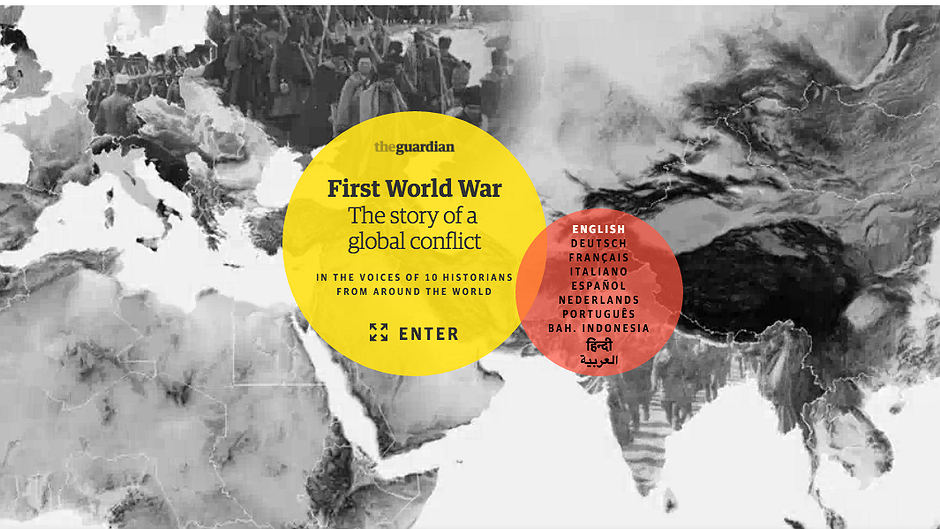
5 Groundbreaking Examples of Interactive Journalism
In recent years, news organisations have been developing new forms of digital storytelling. From news quizzes and timelines to multimedia and data visualisations, this new wave of interactive journalism has given readers the chance to actively engage with stories in a completely different way. But this innovation has also provided a platform for deeper and more complex stories to be told. To give you some inspiration, we take a look at five compelling examples of interactive journalism.
Rue89: Rebuilding Haiti
Four years after the earthquake, how is Haiti rebuilding itself? That was the question Rue89 wanted to answer with their interactive “Rebuilding Haiti”. With a mix of longform journalism, news games and multimedia, the story allows readers to become part of the process, asking them to make the choices for the country. Some of the development issues include land reform, access to clean water, education and brain drain.
The New York Times: The Syrian Civil War
Last autumn, The New York Times published “Untangling the overlapping conflicts of the Syrian Civil War”. The flow-chart inspired interactive piece clearly explains how the conflict has grown from a national uprising to a full blown international conflict. With graphics, images and text, readers can understand the different key players in the war along with their motives. The detailed maps also show how Syria is divided up between the Syrian Army, the opposition rebels and ISIS.
The Guardian: World War I
If you want to understand the complexity of World War I, take a look at The Guardian’s interactive documentary. “A Global Guide to the First World War” is available in seven languages, and gives readers the chance to listen to 10 historians from around the world explain World War I. The seven part series shows footage from that era, including images from the trenches to the battlefields and the aftermath of the war. What’s more, the interactive documentary is visually inspiring as it is informative and balanced.
SBS: 1989 Tiananmen Square
To honor the 25th anniversary of the 1989 Tiananmen Square uprising in Beijing, Australian broadcaster SBS created “After64”. This interactive piece of journalism allows readers to see how the media in China and the West interpreted the events. While the Chinese media described it as a “riot” and “conspiracy”, Western media called it a “massacre” and “spontaneous”. What’s more, readers can contribute to the conversation based on multiple media sources and original documentaries.
Small Media - Women in the Middle East
In 2016, Small Media collaborated with the Munk School of Global Affairs and Vignette Interactive to develop “Voices of the Middle East” — a new bilingual platform in Arabic and English dedicated to telling the untold stories of inspiring people from across the Middle East. First up is a series exploring how women have experienced the Syrian war with an interactive documentary and infographic, and we hear they are also planning to release a full-length documentary on this topic in the next few weeks. What’s more, the series also includes a compelling data visualisation based on a large-scale survey asking respondents from across the Middle East what they thought about gender equality, access to education, and freedom of movement for women.
Got a compelling interactive piece of journalism you want to share? Tweet us the link at @AdvocAssembly!
Want to learn more about designing interactive storytelling? Sign up to Advocacy Assembly’s free course “Data for change: Data visualization for human rights” taught by the award-winning designer Stef Posavec.
Related courses

90 mins
 School of Data
School of Data
90 mins
 School of Data
School of Data Rory Peck Trust
Rory Peck Trust
50 mins
 Rory Peck Trust
Rory Peck Trust
Blogs

6 useful resources for journalists covering Covid-19
With a global pandemic spreading throughout the world, journalists are under increasing pressure to report accurate and relevant news for the masses. Often when covering a crisis, those on the reporting frontlines compromise their physical safety and mental health. To show some solidarity, the Advocacy Assembly team curated a list of useful resources from other organisations leading the way on this.

5 ways to find data for your next story
Data journalism is fast becoming a big trend in newsrooms across the globe. However, data isn’t always so easy to find. Here are five ways to get data for your next article.



